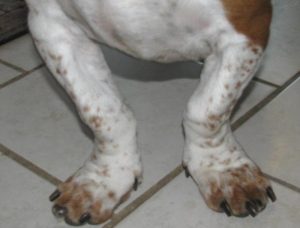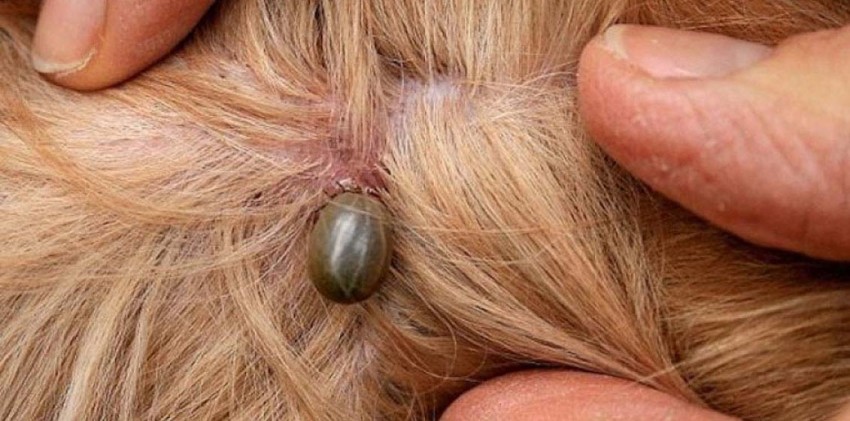7 reasons for limping on the front or hind paw of puppies
 Causes of lameness in puppies
Causes of lameness in puppies
If the puppy began to limp, you need to act quickly to prevent problems that may accompany him throughout his life. All these diseases should be treated as early as possible in growing dogs. If your puppy has a limp, contact your orthopedic surgeon.
Paw fracture in a puppy
Puppy paw fracture – operation
Fracture by type of green branch (subperiosteal fracture) occurs in young children and in small puppies. The reason for this fracture is that the bones remain flexible and elastic, because they did not have time to accumulate the proper amount of minerals. This fracture is in the form of a crack, the bone is not completely broken.
This fracture is very well treatable (if treatment is possible in principle).
The most common cause of such fractures is falling or jumping of puppies from beds, sofas, and other small heights.
Dislocation of the patella in puppies
This is the most common cause of lameness in dogs. At the same time, the dog is walking normally, pulling up the paw upwards, and then going normally again. This pathology is caused by the patella slipping out of the puppy’s paw joint and is due to paw growth anomalies.
Dislocation of the patella usually develops in puppies up to a year.
Hip dysplasia in a puppy
Puppy hip dysplasia – surgery
This problem is the most common and dangerous cause of gradually worsening lameness in puppies. Often, the owners believe that puppies with dysplasia are just calm and quiet, they do not like to play, they sit or lie a lot, reluctantly get up.
If the puppy dysplasia is diagnosed in a puppy before the age of 16 weeks, the joint condition can be significantly improved or even completely restored to normal with an operation called the juvenile symphysiodes of the pubic bones.
Valgus deformity of the forelimb or “my dog has paw curves”
valgus puppy forepaw
Quite often, the owners do not worry if the puppy starts to develop abnormal limbs. In fact – this is a serious problem in which the bones of the limbs of the dog begin to “bend”. This is a dangerous condition that requires taking emergency measures so that this curvature does not melt permanently. The cause of the deformity is that the forearm of the forepaw consists of 2 parallel bones: the radius and ulna. If one of the 4 bone growth zones is damaged, the others continue to grow in the 3 remaining directions and the paw starts to bend.
However strange it may seem, the treatment requires cutting the bone, which stopped growing, so that the rest of the bones continue to grow correctly and straight.
Elbow dysplasia
Non-contiguous coronoid (hooked) process
The most common of the three causes of elbow dysplasia in puppies. The coracoid processes are thin protruding parts of the elbow bones, easily broken by puppies. Arthroscopic surgery is required for dogs with fragmentation of the appendix to avoid worsening arthritis of the elbow joint.
Elbow dysplasia is a genetically determined disease, usually found in large breeds of dogs. It is believed that the disease occurs more often in the case of overfeeding and excessive loads in the first 12 months of puppy life
Fragmented olecranon
Puppy elbow dysplasia
An ungrown process of the ulna is the second most common cause of elbow dysplasia in puppies. Under this condition, the zone
The bone growth does not connect with the adjacent bone, the bone fragment remains separated. This bone fragment is removed during the operation, the puppy returns to normal.
Cutting osteochondrosis in puppies
The third most common cause of elbow dysplasia in puppies also causes lameness and pain in other joints. Dissecting osteochondrosis occurs when part of the cartilage and bone exfoliate from the surface of the joint. The removed fragment is required to be removed, the surface of the joint is polished by an orthopedic veterinarian, an expert in arthroscopy.
Diagnosing most joint problems with puppies requires high-quality X-rays on a veterinary X-ray machine.



